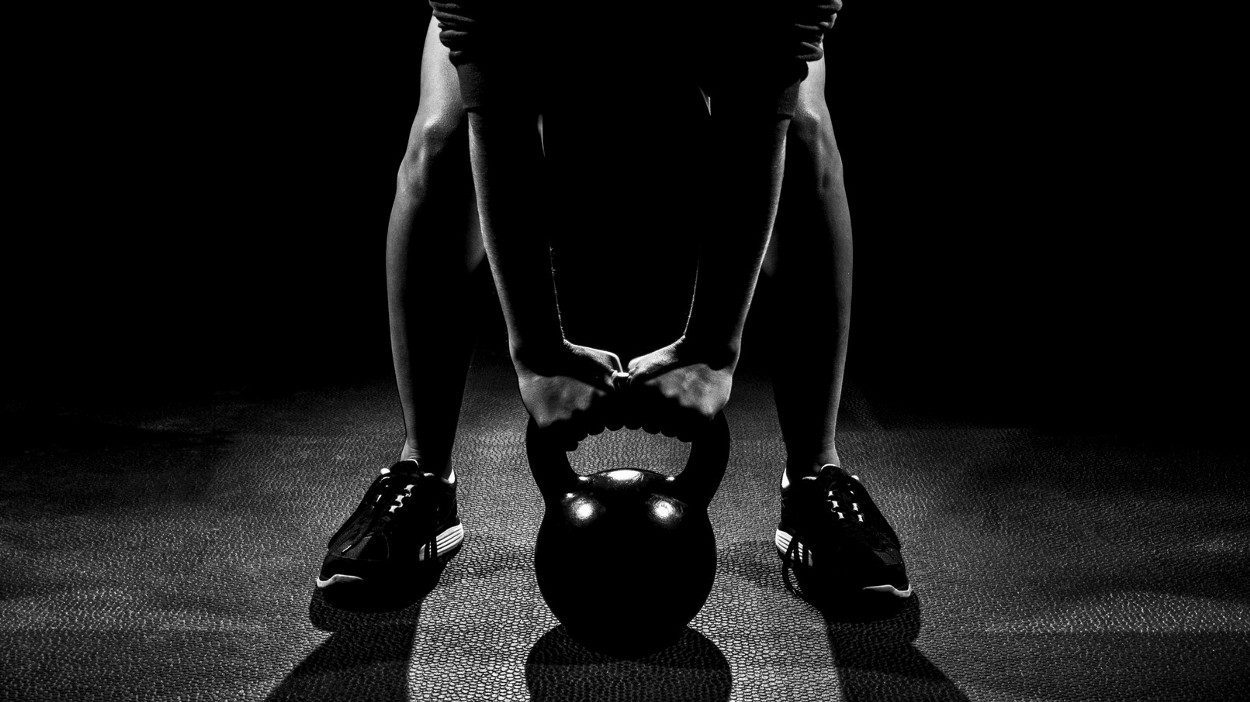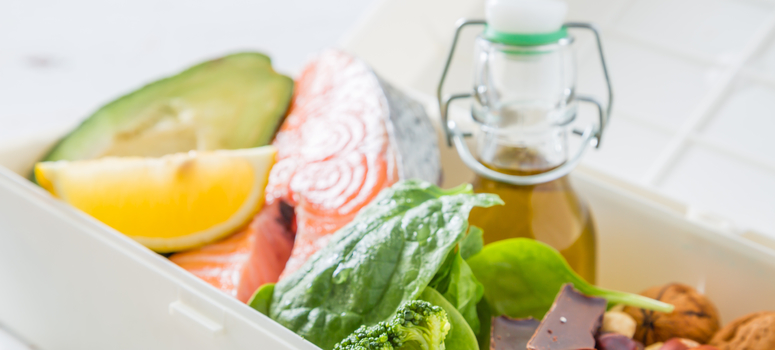November 2016 NewsBlast | Article 2
15 Nov 2016 / NAFCNAFC NewsBlast - November 2016 | Article 2
7 Tips | How to Become an Effective Listener
By Tammy LeBoss | thefitprofoodie.com

“Allow your softer, more intuitive, and less dominating feminine qualities to rise to the fore, so that you’re surrendering rather than dominating, receiving rather than broadcasting, loving rather than fighting.” — Tao te Ching
Did you know that most people are not naturally good listeners?
However, with practice and diligence, you could become the popular trainer skilled on the art of listening. Did you know that out of the total time we spend in communicating, only about 50 percent of this is spent on listening? Although most people are not naturally good listeners, listening is a skill that can be easily practiced in our daily interactions. In fact, skilled listening is crucial in creating your client’s road map to success.
What are other benefits of effective listening?
Can we objectively rate ourselves on this skill? And how can we overcome barriers and give appropriate feedback? Studies show that too many professionals spend too much time talking and not enough time listening.
In fact, most people are too busy thinking about their responses, rather than actually listening. We suggest taking ‘mini notes’ that will later remind us to probe more deeply into certain areas. But do this only after they finished their train of thought. Too often, a person asks a question that will distract the other person from fully offloading.
Here are 7 Tips that will guarantee a better trainer-client rapport:
- Be fully present. Make good eye contact and notice overall attitude.
- After speaking, stop and notice the reaction. Notice body language.
- Listen for actual the meaning. What is the speaker attempting to convey to you?
- Listen beyond the actual spoken words; sometimes, people don’t say what they really mean, or just don’t know how to express it.
- Ask yourself ‘why’– this will give you insight into what truly motivates your client.
- Resist nodding your head in agreement; this communicates that you already know the answer when you may not.
- Let go of the need to be accepted, to be right, to have all the answers.
While effective listening is a true art form, it’s noteworthy to say
that effective questions may also open the door to better knowledge and understanding. The art of questioning lies in knowing which questions to ask and when. While effective listening may in some circumstances, require one’s ability to effectively ask the right questions, overall, when it comes to the client/ trainer rapport, we recommend the trainer pay close attention to the actual meaning behind the words.
Remember that too often, most of us will want to inject our opinion, or to want to ‘fix’ the problem before the other person is finished speaking.
If you have a question, ask a specific one if you want to hear a specific answer.
Open questions, as opposed to leading questions, are those that cannot be answered with a straight “yes” or “no.” Use open questions whenever possible to gain insight into the other person’s character, and to invite the response, so you may understand what truly motivates them to want to succeed. So ask your question then, stop talking, and be silent.
Here is an example of a typical scenario in which you will get to practice using open-ended questions.
Be sure to convey to your client that you’re not only interested in what they have to say, but that you also respect their opinion:
If somebody says they want to lose 10 lbs. without sounding condescending, ask them: Since weight is a measurement of mass and gravity, what would you like to lose — muscle, water or body fat?
Since the trainer/listener knows the answer already, use this as an opportunity to explain to them that a weight loss plan will not get them into the size of clothing they want. Whereas, a body fat loss plan will. Recall Tips 3–5 are really about ‘listening to intent’ rather than hear the actual spoken words. Asking them the above question allows your client to understand that their weight may stay the same, or may increase while their measurements drop.
Be an investigator — ask yourself (not necessary them): why do they want to lose weight? What is their true purpose of losing weight? Ask open-ended questions to gain a real insight on the real answer.
Why fit in when you could stand out?
If you want to be the trainer whose clients will want to keep for life, become an active listener, not a passive commentator. Help them to see their end goal and if it’s helpful, take body measurements. Remember that while creating a realistic timeline can be very motivating and puts vision within reach, it’s important to be realistic yet specific. Always remember that great listeners show respect and seek to understand first, thus listening more than they speak. When the client feels understood, they’re more likely to reciprocate and to connect, thus staying on a motivated path.
While being comfortable with challenging assumptions will take some time for new trainers, it’s easy enough to not validate excuses for not succeeding. Developing better listening skills and intuition can be a fun process that both trainer and client may cultivate over time, while also encouraging a great rapport and improved client retention.
November 2016 NewsBlast | Article 1
15 Nov 2016 / NAFCNAFC NewsBlast - November 2016 | Article 1
4 Hacks To Overhaul Your Workout
By Tammy LeBoss | thefitprofoodie.com

We’ve all been there, right?! We keep doing the same routine, expecting quantifiable results and instead we see zero progress, or negligible benefits at best. You may have heard this before:
Insanity: doing the same thing over and over again and expecting different results.~ Albert Einstein
So, let’s try something different, shall we?
Tip 1: Powerful Breathing: Relaxing the Belly
One key point that could transform your joy of cycling…
Whether you’re cycling, doing yoga or trying to navigate life with greater ease, here’s one thing to focus on that could transform your training experience:
Relaxing the belly and opening up the back to the same degree are key in sustaining a strong breathing pattern. Given the body position for cycling, it is much easier for the athlete to breathe through the abdomen as opposed to the chest. This is the reverse of what most trainers and Pilates teachers will tell their students. While breathing through the chest and keeping the abdomen contracted all the time is ideal for just about every other sport, in cycling it is counter-productive.
Sucking the belly in stiffens up the upper body and uses extra energy where it doesn’t need to be spent. In cycling, you want the most of your energy expenditure to go to your legs because that is the engine. You want your upper body loose and ready to adapt to whatever terrain you come upon. Remember, your upper body is just there to steer and if your muscles are tense already from flexing your muscles in your chest and upper back because you are focusing on scooping your abs, then you’re asking for trouble when you come upon a terrain change, obstacle or crash.
For powerful breathing, contrary to what you may have learn, relax the belly.
Tip 2: Adjustments for a Better Squat
Ever wonder why is it important to stretch your calves?
Tight calves contribute to foot pronation, which contributes to patella-femoral mal-tracking (PFJ). For optimal maintenance, try stretching 2–3 times per day, holding stretches for 30–60 seconds.
You can avoid the expensive cost of doing muscle balancing tests by becoming aware of the how/why/where the imbalances are: Studies show that around 90% of cases are due to one of the following three problems:
- Foot pronation,
- Weakness of the inner quadriceps (VMO) and gluteals, or
- An overly tightened IT-Band (iliotibial band, a tendon-type band on the outside of the thigh).
So, stretching out the calves often today can help improve your squat, your walk, your posture.
Tip 3: 1 Effective Way to Wake Up the Core: Belly Whack Test
Want to learn 1 way to wake up that core?
Have you tried the Belly Whack Test with your clients? Tap the belly — Use this strategy with the plank, superman, and bridge, and you’ve activated the transverse abs, spinal stabilizers and the gluteus. Successful workouts will happen when clients get out of their heads, and into their bodies. Before your next training session, give the belly an effective whack, feel for the quake and you’ll go deeper (into the core).
Today’s Training Tips:
- Use less words, teach clients to ‘feel’ as opposed to ‘thinking about’ a particular movement.
- Make muscle activation accessible, and always keep it fun.
Tip 4: How much ab tension is enough?
Tired of the traditional core work?
Break the monotony of traditional core work, and break through the inertia of weekend play and repose. It’s likely that no matter who you are or what you do, you probably sit too much. We all should try to sit less, but sometimes that isn’t an option. So, what are easy and fun ways to wake up the body prior to activity?
It’s a physics thing: The moment we add dynamic movement or a force compressing on the spine, we need to increase abdominal tension. Adding greater trunk stiffness is effective to avoid rounding or flexing your back.
Training Tip: To maintain a good spinal position in your deadlift, exhale fully piercing navel to spine. Feel your TA fire, as you’ll need 100 percent abdominal tension!
Conclusion
It’s all in the details. If you are looking to feel the difference, keep making adjustments and you will see results in no time.
August 2016 Newsletter | Article 2
05 Aug 2016 / NAFCNAFC Newsletter
2 Ways to Beat the Summer Heat!
By Tammy LeBoss | thefitprofoodie.com

The heat is here, school is out and the summer games on!
Fun and games can however, become ‘not so fun’ when water intake is overlooked and good oils are turned bad. This summer, be sure to pay extra attention to oil and water—how to properly store, and how much to drink, respectively. Water has been referred to as the 2nd most important nutrient after oxygen. Here’s why it’s critical to our health. Did you know that mild dehydration is one of the most common causes of daytime fatigue? Estimates show that 75% of Americans have mild, chronic dehydration. This is alarming since proper hydration is required for maintaining healthy blood flow, proper kidney function, proper sodium/potassium/electrolyte balance and proper digestive functions.
Water gives us life. Did you know that the human body is comprised of 65% water? Water is necessary for life to exist, makes us healthier and it’s incredibly refreshing especially after a workout. Water is not only the most important nutrient in the body, but also the most abundant. It’s critical to the balance of all the body's systems, including the brain, heart, lungs, kidneys and muscles. In fact, the body needs water for millions of metabolic processes, temperature control, fluid volume, and lubrication.
Can we drink too much water and how much is enough?
When determining how much water is appropriate, consider the individual. How much to drink each day will depend upon a few variables. Drink enough water to replace normal daily losses via perspiration, waste removal, and breathing.
The following factors also contribute to the need for increased water consumption:
- Increased or hot weather
- Increased workload
- Increased respiration
- Increased bowel movements
- Large amounts of caffeine or sugar consumed
NAFC’s Nutrition Coach Course recommends the following rule-of-thumb formula for determining your optimum daily water intake: Consume between 1⁄2 to 1 oz. of purified water per day per pound of body weight depending upon your general activity level and your environmental conditions or surroundings.
This does not include compensation for losses due to exercise or excessive sweating. Add another 6-12+ ounces per 15-20 minutes of exercise depending on how hot it is, the relative humidity, and how much you sweat in relation to others under the same conditions. Although the exact amount of water needed per day is undetermined by scientists, we believe it depends on the individual.

Preventing Good Oils from Turning into Bad
We’ve all heard about the health benefits of olive oil. Embraced by many health nuts, ‘good fats’ such as olive oil, fish oil, coconut oil, avocado and walnuts are known to fight inflammation, reduce risk of heart disease, and reduce the likelihood of Alzheimer’s disease. Many of us cook with olive oil, but did you know that olive oil is only good for us when it’s used cold? Increased heat can increase the likelihood of oxidation. In fact, it's important to realize olive oil is not necessarily good for cooking. Why? Due to its chemical structure and a large amount of monounsaturated fats such as oleic acid, heating olive oil when cooking can turn this good fat into a bad one. To learn more, geek out on science with NAFC’s Nutrition Coach Certification and find out how heat can actually damage certain foods, changing their molecular structure(s) so they’re no longer beneficial to our health.
Concerned about oxidation and rancidity? Try cooking with coconut oil. It is the ideal choice because it’s a vegetable fat stable enough to resist heat-induced damage. This summer, protect your oils from going bad; store foods, namely good oils away from sunlight and heat.
Here are more tips for protecting your food oils:
- Keep in a cool, dark place -darkness is key because light will definitely oxidize the fats in olive oil and other good fats
- Purchase smaller bottles rather than larger to ensure freshness
- Immediately replace the cap after each pour, keeping bottles tightly capped
- Add olive oil or other healthy oils to foods after cooking
- Avoid leaving food out exposing it to air; the longer food sits around, the greater the likelihood of oxidation
With respect to light, purchase oils in bottles made from darker-tinted glass. They will usually be dark brown or dark green in glass color. Also, store your oils, almond butter and nuts in a cabinet that is lightproof. With respect to heat, many oils can be kept fresh if stored in the refrigerator where the temperature remains continuously low. To learn more, do your research to understand the chemical composition of an oil. This is will be a key factor in preventing the risk of rancidity and potential health issues. Remember 1 key basic principle involved in saturated and unsaturated fats: The more saturated fat contained in an oil, the less susceptible it is to rancidity. The greater the amount of unsaturated fat in an oil, the more likely it is to become rancidity.
Remember, fat heals, protects and satisfies us—
...but only when it’s kept fresh for our stomach and taste buds!
begin ... prev 14 15 16 17 18 19 20 21 22 23 24

